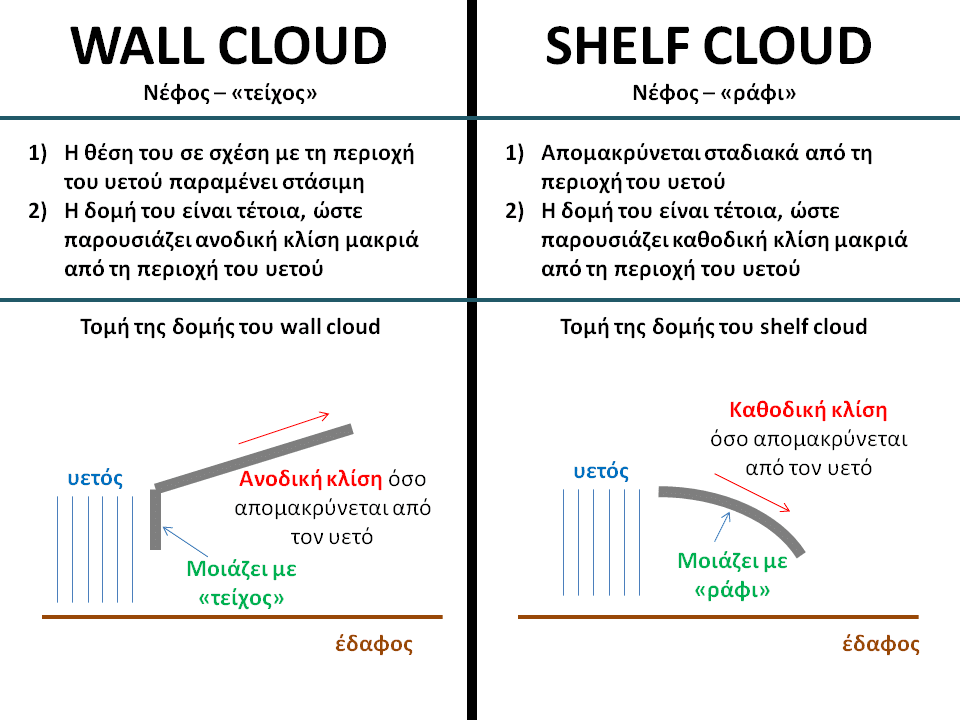

Should you choose other accessories, such as cloud pillows or a lampshade with white clouds the room will become a coherent, stylish whole. A cloud shelf on a wall will make it lovely and unique. You can use one shelf only or mount several next to each other and ta-da! A beautiful arrangement of a child’s room is ready. Cloud shelves available in four colours are an interesting option. Another interesting way of decorating the walls in your child’s room are wooden shelves.įun with Mum has in its offer aesthetically made shelves in several shapes and sizes. We can use colourful garlands, pom-poms, pictures or images.
Wall and shelf cloud how to#
So how to decorate them to make the walls more positive and the room cosier? There are many ways to do so. Not all tornadic wall clouds will have these characteristics (and some tornadoes do not form from wall clouds), but these four characteristics are good rules of thumb to follow.Walls in a child’s room should not be bare. Small cloud elements in or near the wall clouds will quickly rise up into the rain-free base. Fourth, the wall cloud will exhibit evidence of rapid vertical motion. Usually surface winds of 25-35 miles an hour are obsserved near tornadic wall clouds. Third, strong surface winds will blow in toward the wall cloud from the east or south east (inflow). Sometimes the rotation will be very visible and violent before the tornado develops. Second, the wall cloud will exhibit PERSISTENT rotation. It may change its shape, but it will be there for 10-20 minutes before the tornado appears.

First, the wall cloud will be persistent. There are four main characteristics usually observed with a tornadic wall cloud. Once a wall cloud has been positively identified, the next challenge will be to detemmine its tornado potential. Only a few of the lowerings that will be seen when spotting will be legitimate wall clouds, and only a few of these wall clouds will actually produce tomadoes. The table below summarizes these differences. Shelf clouds tend to slope downward away from the precipitation while wall clouds tend to slope upward awayfrom the precipitation area. A wall cloud, though, will tend to maintain its relative position with respect to the precipitation area. If a shelf cloud is observedfor several minutes, it will tend to move away from the precipitation area. Shelf clouds signify an area of downdraft and outflow while wall clouds indicate an area of updraft and inflow. A shelf cloud may also appear to the south west of a wall cloud in association with a phenomena called the rear flank downdraft. A shelf cloud can form under the rain-free base, however, and take the appearance of a wall cloud. Shelf clouds typically form near the leading edge of a storm or squall line. Shelf/roll clouds can develop anywhere an area of outflow is present. Roll clouds are tube-shaped clouds and are also found near the gust front. Shelf clouds are low wedge-shaped clouds associated with the gust front. Shelf clouds and roll clouds are examples of "accessory clouds"you may see beneath the cloud base of a storm. This rain-cooled air is very humid the moisture in the rain cooled air quickly condenses (at a lower altitude than the rain-free base) to form the wall cloud. Some low-level air is pulled into the updraft from the rain area. Wall clouds are usually about two miles in diameter and mark the area of strongest updraft in the storm.Īs the storm intensifies, the updraft draws in low-level air from several miles around. This is usually the case with high-precipitation supercells where the precipitation has wrapped around the western edge of the updraft. Sometimes, though, the wall cloud may be to the east or southeast of the precipitation area. The wall cloud is usually to the rear (generally south or southwest) of the visible precipitation area.
Wall and shelf cloud free#
The wall cloud is defined as an isolated cloud lowering attached to the rain free base. Information provided by the National Weather Service


 0 kommentar(er)
0 kommentar(er)
